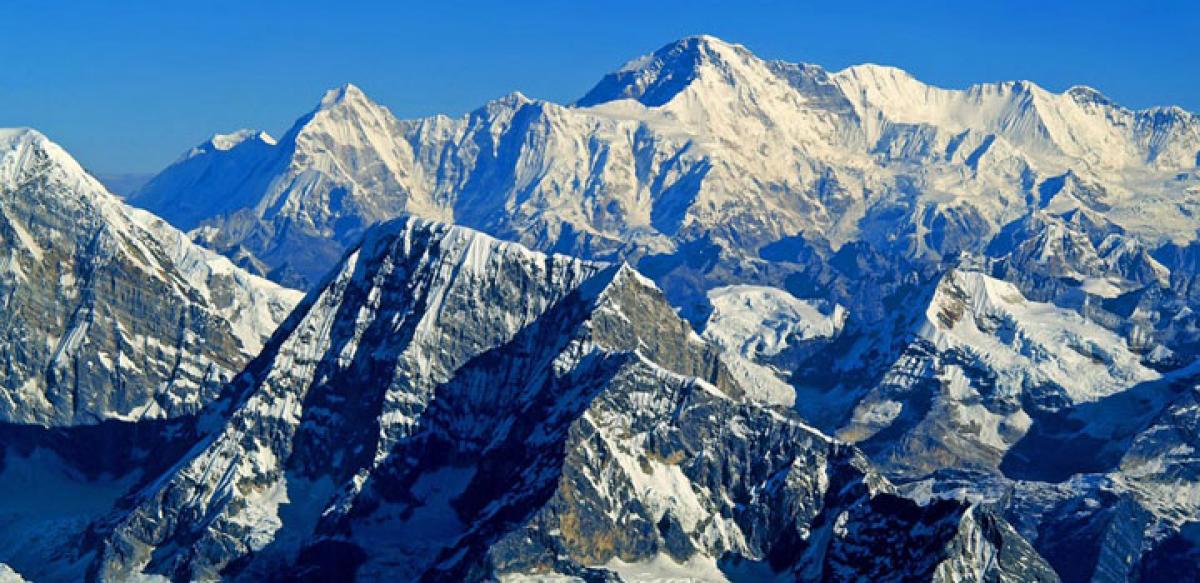Live
- Government Launches Uniform Diet Plan to Boost Student Health and Education
- Robust Security Arrangements for TSPSC Group-2 Exams in Jogulamba Gadwal
- National Lok Adalat Resolves 3387 Cases at Alampur Court
- ‘Get Set, Grow Summit 2024’ Focuses on Digital Detox for Families
- Stokes motivates his team to put in extra effort, says England pacer Potts
- From overcoming setbacks to leading India in U19 Women’s Asia Cup, Niki Prasad's amazing journey
- Driving Enterprise Security: Inside Venkata Reddy Thummala’s Leadership Journey
- Constitution debate: PM Modi hails 'Nari Shakti'; makes strong pitch for 'United Bharat’
- Abhijeet Bhardwaj: Revolutionizing Enterprise Analytics with Innovation and Expertise
- Bihar: Inquiry initiated against principal who went to buy veggies during school hours





 During their investigation, they analyzed the change in 'reflectance' in the accumulation area of Baspa basin in Himachal Pradesh for the year 2009, as the region has experienced extensive forest fires along with northern Indian biomass burning. Their report shows that the drop in 'reflectance' in the visible region from April to May in the accumulation area was significantly higher in 2009 than in any other year from 2000 to 2012. The number of forest fires in the summer of 2009 was substantially higher than in any other year between 2001 and 2010."This can only be explained by the deposition of black carbon. The study suggests that a change in snow albedo in the accumulation area due to the deposition of black carbon from anthropogenic and natural causes can influence the mass balance of the glaciers in the Baspa basin, Himachal Pradesh, India," says scientist A V Kulkarni. A number of Indian states such as Jammu and Kashmir, Himachal Pradesh and Uttarakhand, located in the western and central Himalayan region, experience large forest fires in the months of May and June. In addition, adjacent regions on the Indo-Gangetic plains also experience large agricultural fires. This can generate a large number of black carbon particles which may be transported into the glaciated terrain of the lower Himalayan mountain ranges due to a southerly wind, says the report. "It can significantly affect the albedo of seasonal snow and on the accumulation areas of glaciers, as black carbon absorbs substantially more radiation than mineral dust," say the scientists.
During their investigation, they analyzed the change in 'reflectance' in the accumulation area of Baspa basin in Himachal Pradesh for the year 2009, as the region has experienced extensive forest fires along with northern Indian biomass burning. Their report shows that the drop in 'reflectance' in the visible region from April to May in the accumulation area was significantly higher in 2009 than in any other year from 2000 to 2012. The number of forest fires in the summer of 2009 was substantially higher than in any other year between 2001 and 2010."This can only be explained by the deposition of black carbon. The study suggests that a change in snow albedo in the accumulation area due to the deposition of black carbon from anthropogenic and natural causes can influence the mass balance of the glaciers in the Baspa basin, Himachal Pradesh, India," says scientist A V Kulkarni. A number of Indian states such as Jammu and Kashmir, Himachal Pradesh and Uttarakhand, located in the western and central Himalayan region, experience large forest fires in the months of May and June. In addition, adjacent regions on the Indo-Gangetic plains also experience large agricultural fires. This can generate a large number of black carbon particles which may be transported into the glaciated terrain of the lower Himalayan mountain ranges due to a southerly wind, says the report. "It can significantly affect the albedo of seasonal snow and on the accumulation areas of glaciers, as black carbon absorbs substantially more radiation than mineral dust," say the scientists.



